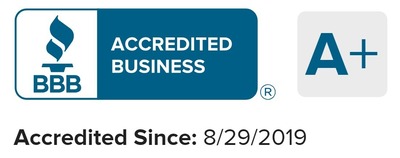Did you know that Oklahoma consistently ranks among the states with the lowest property tax rates in the nation?
As a homeowner or real estate investor, you’ll be happy to learn that the average effective property tax rate in Oklahoma is just 0.90%, which is significantly lower than the national average of 1.07%. This makes Oklahoma an attractive place to own property, whether you’re purchasing a home or expanding your investment portfolio.
But how exactly do property taxes work in Oklahoma, and what exemptions or strategies can help you save even more? Understanding Oklahoma’s property tax rates and these details is crucial for you. Additionally, exploring available rental property tax benefits can further optimize your investment returns.
In this blog post, I will explain everything you need to know about Oklahoma’s 2025 property tax rates, how they compare to other states, and what you can do to keep your tax bill as low as possible.
Let’s dive in!
How Property Taxes Work in Oklahoma
Property taxes in Oklahoma play a crucial role in funding local services such as public schools, emergency services, and infrastructure. Understanding how these taxes work and are calculated can help you manage your expenses more effectively.
In Oklahoma, homeowners’ property tax bills are determined by two key factors: the property’s taxable value and the applicable tax rate. Not always, but taxable value is often based on the market value of your property.
1. Assessment of Property Value
The first step is the assessment of your property value. Your county assessor determines your property’s market value annually based on recent sales of comparable homes. Physical inspections happen at least once every four years. If you own a residential homestead or agricultural property, your assessed value can only increase by a maximum of 3% per year, protecting you from sudden tax spikes. Any other property has a cap of 5%.
2. Assessment Ratio
The assessed value is a percentage of the market value, known as the assessment ratio. In Oklahoma, this ranges from 10% to 15%, depending on the county. For instance, if your home’s market value is $150,000 and your county’s assessment ratio is 10%, your assessed value will be $15,000 and your tax rate will apply to this amount.
Fair Cash Value × Assessment Ratio = Assessed Value
3. Taxable Value and Exemptions
The taxable value is calculated by subtracting any applicable exemptions from the assessed value. The most common exemption is the homestead exemption, which reduces the taxable value by $1,000 for owner-occupied primary residences. Additional exemptions are available for seniors, veterans, and disabled individuals, further lowering the taxable amount.
Assessed Value − Exemptions = Taxable Value
4. Millage Rates
Property taxes are levied based on millage rates, where one mill represents $1 in tax per $1,000 of taxable value. These rates are set by local taxing authorities, including counties, school districts, and municipalities, meaning your total tax bill may vary depending on where you live.
Taxable Value × Millage Rate = Property Tax.
Oklahoma Property Tax Rate: County-Specific Rates
In Oklahoma, property tax rates vary by county, reflecting differences in local policies and property values. Here’s a simplified overview of property tax rates in select counties:
| State | Effective Property Tax Rate (%) | Median Home Value ($) | Average Annual Property Tax ($) |
| Oklahoma County | 0.90% | $199,764.60 | $1,797.88 |
| Tulsa County | 1.05% | $196,300 | $2,052 |
| Cleveland County | 1.08% | $203,900 | $2,202 |
| Comanche County | 0.91% | $145,800 | $1,320 |
| Beckham County | 0.79% | $149,800 | $1,178 |
| Canadian County | 1.01% | $212,700 | $2,157 |
| Delaware County | 0.62% | $152,500 | $942 |
| Kingfisher County | 0.57% | $189,000 | $1,079 |
| Logan County | 0.75% | $221,300 | $1,670 |
| McIntosh County | 0.65% | $121,000 | $790 |
| Murray County | 0.40% | $148,200 | $589 |
| Payne County | 0.88% | $196,100 | $1,730 |
| Texas County | 0.68% | $146,200 | $992 |
| Washington County | 0.95% | $151,000 | $1,433 |
Source: smartasset
How Oklahoma’s Property Taxes Compare to Other States
As mentioned above, Oklahoma’s average property tax rates are relatively low compared to many other states in the U.S.
- Statewide Average: Approximately 0.90% of a property’s assessed value.
- Comparison to National Average: The U.S. average is around 1.07%, meaning Oklahoma homeowners generally pay less in property taxes than many other states.
Here’s a comparison of property tax rates across various states:
| State | Average Home Value ($) | Property Tax Rate (%) | Average Annual Property Tax ($) |
| Alabama | $220,663.56 | 0.41% | $904.72 |
| West Virginia | $158,495.35 | 0.59% | $935.12 |
| Louisiana | $201,120.89 | 0.56% | $1,126.28 |
| Arkansas | $198,501.94 | 0.62% | $1,230.71 |
| Mississippi | $176,829.86 | 0.79% | $1,396.96 |
| South Carolina | $288,530.77 | 0.56% | $1,615.77 |
| Kentucky | $197,759.76 | 0.85% | $1,680.96 |
| Oklahoma | $199,764.60 | 0.90% | $1,797.88 |
| Wyoming | $316,886.00 | 0.61% | $1,933.00 |
| Indiana | $234,165.99 | 0.83% | $1,943.58 |
Oklahoma ranks as the eighth lowest state in terms of property tax rate at 0.90%, with an average annual property tax payment of approximately $1,797.88.
Why is Oklahoma’s property tax lower? Unlike some states with high property taxes and no income tax (like Texas), Oklahoma relies on a combination of sales tax, income tax, and property tax to fund public services.
This low-tax environment makes Oklahoma an excellent choice for both homeowners and real estate investors. Whether you’re buying your first home or expanding your rental property portfolio, the state’s affordable property taxes can help you maximize your investment.
Property Tax Exemptions & Reductions in Oklahoma
If you’re looking to reduce your property tax burden, Oklahoma offers several exemptions that can help:
1. Homestead Exemption
If you own and occupy your home as your primary residence on January 1 of the tax year, you qualify for a $1,000 reduction in your taxable value. Once approved, this exemption automatically renews unless you move or sell your home.
In addition, if your annual household income is $20,000 or less, not including gifts or veteran’s disability benefits, and you qualify for the homestead exemption, you could receive an extra $1,000 deduction on your home’s assessed value.
2. Senior Valuation Freeze
If you’re 65 or older and your annual household income is $86,000 or less, you can apply to freeze your property’s assessed value. This means your taxable value won’t increase, even if property values rise, giving you financial stability as you age.
3. 100% Disabled Veterans Exemption
If you’re an honorably discharged veteran with a 100% disability rating, you’re eligible for a full exemption from property taxes on your homestead. Surviving spouses of veterans killed in action may also qualify for this benefit, which can provide significant financial relief.
Note: To take advantage of these exemptions, contact your county assessor’s office and submit the required application forms before the deadline. Each county may have slightly different requirements, so it’s essential to check with your local office.
Oklahoma Property Tax Payments: Deadlines, Methods, and Penalties
As a property owner in Oklahoma, it’s essential to stay informed about property tax obligations to ensure timely payments and avoid penalties.
1. Deadlines for Property Tax Payments
Oklahoma property taxes become due annually on November 1. Taxpayers have the option to pay the full amount or in two installments. To avoid penalties, at least half of the total tax must be paid by December 31. If the first half is paid by this date, the remaining balance is due by March 31 of the following year.
It’s important to note that if no payment is made by December 31, the entire tax amount becomes delinquent on January 1. Additionally, for tax amounts of $25 or less, the full payment is required before January 1.
Note: Failure to pay property taxes may result in a tax lien or foreclosure on the property.
2. Methods of Payment
Oklahoma offers several convenient methods for property owners to pay their taxes:
- Online Payments: Taxpayers can pay via ACH (e-check), credit card, or debit card through the county treasurer’s website. It’s important to be aware that third-party service providers may charge convenience fees for these transactions.
- Mail: Payments can be sent via postal service to the county treasurer’s office. Ensure that mailed payments are postmarked before the due dates to avoid penalties.
- In-Person: Payments can be made directly at the county treasurer’s office or designated drop-off locations.
3. Penalties for Late Payments
Failure to pay property taxes by the due dates incurs penalties:
- If no payment is made by January 1, the entire tax amount becomes delinquent.
- Delinquent taxes incur an interest charge of 1.5% per month, equating to 18% per annum until the balance is paid in full. This interest begins accruing on the 15th day of each month.
- Penalty of 5% of the total tax due is added for late payments.
Taxpayers should be aware that even if they do not receive a tax statement, they are still responsible for paying their taxes on time, as per state law.
Conclusion
Oklahoma’s property tax system is designed to be fair and affordable, making the state a great place for homeowners and real estate investors alike. With an average effective property tax rate of just 0.90%, you can enjoy lower costs compared to many other states. Whether you’re considering a move to Oklahoma or already call the Sooner State home, understanding these tax rates helps you make informed decisions about property ownership and investment.
If you need expert property management in Oklahoma City to help you navigate tax implications, maximize your rental income, and keep your investment running smoothly, OKC Home Realty Services is here to help. Contact us today to learn how we can assist with your property management needs!

Author
Scott Nachatilo is an investor, property manager and owner of OKC Home Realty Services – one of the best property management companies in Oklahoma City. His mission is to help landlords and real estate investors to manage their property in Oklahoma.
 (
(









